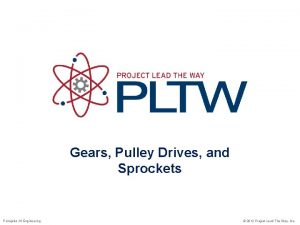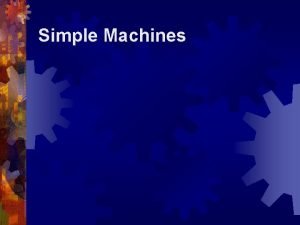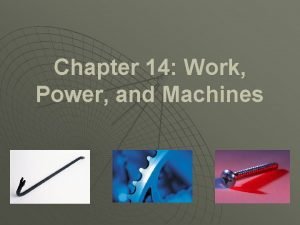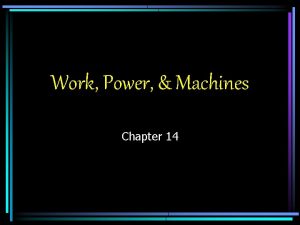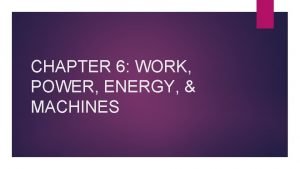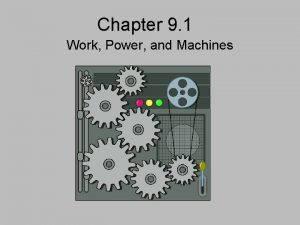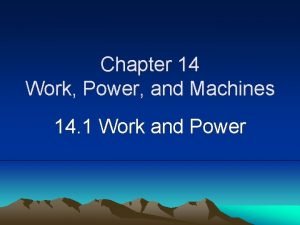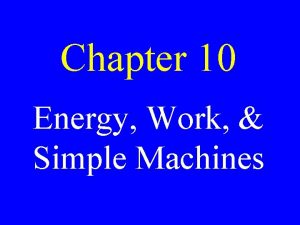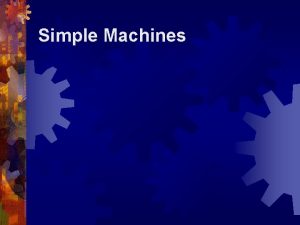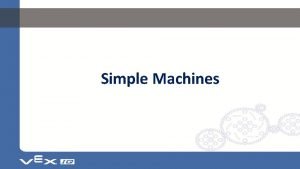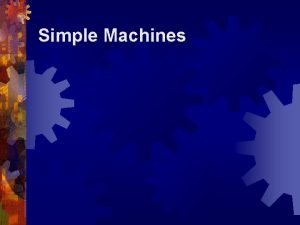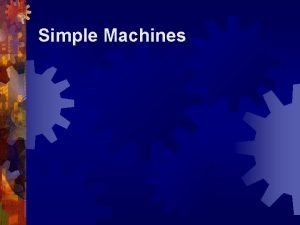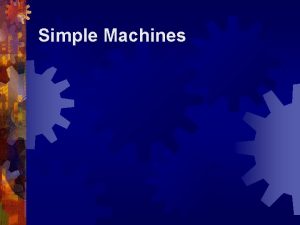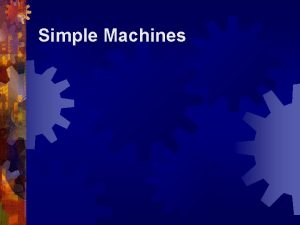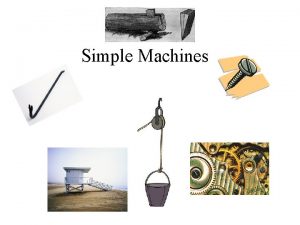Work Power Simple Compound Machines Mechanical Ideal Mechanical










- Slides: 10

Work & Power Simple & Compound Machines Mechanical & Ideal Mechanical Advantage Efficiency By: Deborah Wang modified by: S. Ingle

Work Concepts 4 Work (W) ~ product of the force exerted on an object and distance the object moves in the direction of the force. – W is transfer of energy by mechanical means. – W is done on an object only if it moves in the direction of the force. – Only the component of the force in the direction of the motion does work.

Work Formulas Work = Force x displacement F W = Fd d 1 joule (J) = 1 Newton * meter (N * m) if force is exerted at an angle to direction of motion, W = (Fcos )d or W = Fd cos F d

Power 4 Power (P) ~ rate at which work is done or rate at which energy is transferred. Measured in watts. – Watt (W) ~ one joule of energy transferred in one second. Power = Work / time 1 watt = 1 joule / second (J/s)

Simple Machines 4 Machine ~ makes work easier either by changing the magnitude or the direction of a force, but can not increase the amount of work done. 1. 2. 3. 4. 5. 6. lever ~ bottle opener, seesaw, crowbar pulley ~ rope on flagpole, block & tackle wheel-an-axle ~ wheel barrow, bike pedals inclined plane ~ wheelchair ramp wedge ~ knife, axe, chisel screw ~ bottle cap, nut, bolt

Mechanical Energy 4 Effort force (Fe) ~ force you exert on a machine. 4 Resistance force (Fr)force exerted by the machine. Win= Fede Work input Wout= Frdr Work output

Ideal Machines 4 Ideal machines exist only in a frictionless, air resistance-less world. 4 No energy or work is lost to the system through outside forces 4 For ideal machines: Work input = Work out put so: Fe de = Fr dr

Mechanical Advantage 4 Mechanical Advantage (MA) ~ ratio of resistance force to effort force. MA = Fr / Fe 4 Ideal Mechanical Advantage (IMA) ~ ratio of effort distance to resistance distance. IMA = de / dr

Efficiency 4 Efficiency ~ ratio of work output to work input expressed in percent. efficiency = (Wout / Win) * 100% or efficiency = (MA / IMA) * 100%

Compound Machines 4 Compound machine ~ consists of two or more simple machines linked so that the resistance force of one machine become the effort force of the second. – Ex. The pedal and gear of a bicycle. 4 To calculate the efficiency of a compound machine you simply multiply the efficiencies of the simple machines that make it together.
 Compound machine with 3 simple machines
Compound machine with 3 simple machines Simple vs compound machines
Simple vs compound machines Chapter 14 work power and machines
Chapter 14 work power and machines Chapter 14 work power and machines
Chapter 14 work power and machines Work power energy and machines
Work power energy and machines A crate of bananas weighing 3000 n
A crate of bananas weighing 3000 n Work power and machines
Work power and machines Chapter 4 section 1 work and machines answer key
Chapter 4 section 1 work and machines answer key Actual mechanical advantage vs ideal mechanical advantage
Actual mechanical advantage vs ideal mechanical advantage Chapter 10 energy, work and simple machines answer key
Chapter 10 energy, work and simple machines answer key Chapter 10 energy, work and simple machines answer key
Chapter 10 energy, work and simple machines answer key
